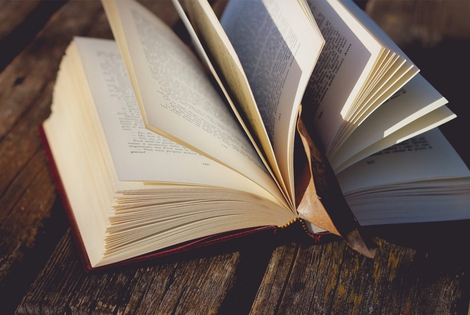
Through stories of encounters between humans and animals, Our Wild Calling offers a way out of an age of solitude. We speak to author Richard Louv.
What is reflexology? How is it practiced? What is it useful for and which disorders does it treat? Let’s explore it through 10 key words.
Reflexology can alleviate headaches and backaches, reduce stress and shoulder tension and even relieve a cold. Here are 10 points that can help you learn more about this technique.
Tree
Reflexologists compare a person to a tree: the roots are the feet, the trunk is the spinal column and the fronds are the face, the nearest part of the human body to sunlight. According to this discipline, feet create the microcosm of human beings, that’s why they should be healthy and firm.
Reflex
In physiology, it is an involuntary and nearly instantaneous secretory or motoric response. In reflexology, it is a response to a stimulus that comes from a peripheral receptor (that can be for example in hands or feet) and is transmitted to a central organ such as the brain or the spinal cord and then to an effector organ (e.g. a muscle, a gland or the other organs). Basically, reflexology tries to improve body functions through the application of pressure to specific areas.
Unity
Every organ has its own specificity but it also reflects in itself the whole body. In particular, feet, hands, the face and ears are the most likely to reflect the other organs thanks to the large amount of nerves they have. Therefore, on the feet there are the reflex areas of the internal organs, spine and bones.
Sensitivity
Feet are especially sensitive: they have 7,200 nerve endings. Mechanoreceptors and exteroceptors sensitive to pressure are widely distributed on the sole.
William H. Fitzgerald
He is considered the founding father of modern reflexology. Even though practices resembling reflexology existed 5000 years ago in Egypt, India, China and Peru, the first reflexology chart dates back to the first decade of the XX century. Fitzgerald started his experimentations in 1902 when he discovered that, by applying pressure to some areas of the body, he induced analgesia or even short-lasting anaesthesia to patients. In 1917 he published with dentist F. Bower his first book, “Zone therapy, or relieving pain at home”.
Eunice Ingham
Among the supporters of Fitzgerald’s theories, Eunice Ingham was the first physiotherapist who concentrated almost completely upon the feet, a sensitive area with many nerve endings. She published many books between 1938 and 1948 and in the late ‘40s her students Hanne Marquardt (German) and Doreen Bayly (British) took reflexology to Europe. Elipio Zamboni, student of the former and Erasmo Buzzacchi, student of the latter introduced this discipline in Italy.
Charts
After Fitzgerald’s work, many studies appeared. Although all charts are based on his chart, other scientists have created their own ones. Yet, all of them agree on the idea that areas on the foot correspond to areas of the body.
Foot zones
Fitzgerald divided the human body in 10 vertical zones and 3 horizontal zones. By applying the same division to feet, he found different reflex areas. Reflex areas of central organs such as the spinal column and stomach are in both feet; the organs on the right side of the body (e.g. the liver) are on the right foot, those on the left side (e.g. the spleen) are on the left foot; lungs and kidneys are on both feet; the toes correspond with the brain and its organs.
Observation
Before the therapy begins reflexologists observe patients, their posture as well as the way they move and walk. Feet position, tension and shape are also observed. For example, symmetrical feet inclined at 45 degrees, reveal relaxation, while, when the head is slightly bent to the right and the right foot is abducted, there is tension on the right side.
Reflexology sessions
Sessions consist of three steps. Firstly, therapists look for the painful areas of the patient and the zones they have to treat. The second step consists in a general treatment of equilibrium, to balance the organs again. Finally, there is a personalised treatment that focuses on the most painful areas. Generally, 10 to 12 sessions of 45 minutes are needed.
Siamo anche su WhatsApp. Segui il canale ufficiale LifeGate per restare aggiornata, aggiornato sulle ultime notizie e sulle nostre attività.
![]()
Quest'opera è distribuita con Licenza Creative Commons Attribuzione - Non commerciale - Non opere derivate 4.0 Internazionale.
Through stories of encounters between humans and animals, Our Wild Calling offers a way out of an age of solitude. We speak to author Richard Louv.
The book Fashion Industry 2030 aims to contribute to reshaping the future through sustainability and responsible innovation. An exclusive opportunity to read its introduction.
The 10 best books about the environment, to change your perspective on the world around us and on our role in the global ecosystem.
Victor Papanek spearheaded social and sustainable design based on political awareness rather than consumerism. A biography of the author of Design for the Real World.
Behrouz Boochani returned to being a free man during the course of this interview. The Kurdish writer was imprisoned by the Australian government in Papua New Guinea for six years.
What holds true whether we’re discussing migration or the environment? That “we’re suspicious of anything that shows empathy, goodness or righteousness,” says author and journalist Roberto Saviano. We interviewed him for the launch of his book There are no taxis in the sea.
Reforestation and soil conservation. This is how Yacouba Sawadogo, a simple farmer, and his family solved the desertification crisis in his village.
Writer Nick Hunt told us about his incredible journey in pursuit of Europe’s most famous winds.
Millions of Bahá’ís celebrate the bicentenary of Bahá’u’lláh’s birth with messages of peace, oneness, empowerment and spiritual unification. The photos of festivities all around the world.







